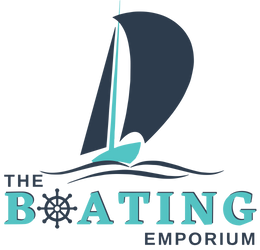PLEASE EMAIL OR BEGIN A LIVE CHAT

Boat Parts Buyer’s Guide
Boat Anchoring
An anchor must rein and secure a boat properly to the seabed, in a way that it counterbalances wind and waves around the boat, keeping the watercraft safe and secure.
Unknown to some, your boat can be weighing the wrong anchor. Without the proper anchor, your boat might be carried away by currents and winds, and cause harm to your boat, or others’. You would also want to make sure that your boat’s anchor is suitable for any seabed or bottom condition.

When choosing an anchor for your boat, your primary concern should be your watercraft’s size and weight. You should also know the bottom conditions of the waters you’ll be sailing in. Different waterways also require specific anchors. Here are some of the types of boat anchors according to their style, use, and bottom characteristics.
Lightweight or Danforth anchors are anchors with two long, rotating flukes designed to minimize clogging of mud or grass. A Danforth anchor would weigh from 2.5 to nearly 200 pounds, and are usually made of galvanized metal or light-weight aluminum. When dropped in water, its flukes would dig into the seabed and buries itself and part of the anchor line.

This kind of anchor is commonly used in small recreational boats, and is best-suited for sandy or muddy bottoms. It’s not advisable to use where mud is loose or on rocky bottoms where the flukes cannot pierce through.
A Plough anchor is suitable for a variety of bottom types. Its holding power makes it favorable for cruise boats. Plough anchors such as Bell Marine’s Viper Pro Series Polished Stainless Steel Plough Anchor is designed to self-launch, preventing damage of the bow roller and rope upon retrieval.

This anchor type is able to hold its place during any weather conditions, and can penetrate through sandy and rocky bottoms.
The Kedge or Navy anchors are more traditional in style. This kind of anchor is usually used by large ships, and not suitable for recreational boats. It works well in heavy grass, weeds, and rocky and sandy bottoms. It’s not advisable to use where mud or sand is loose where flukes cannot penetrate.

Another type of boat anchor is the claw anchor. A claw anchor is able to make a 360-degree turn without giving out. It almost has a similar performance to a plough anchor. It is also designed to self-launch, but a claw anchor’s curved flukes make it easier for the anchor to dig itself in no matter how it lands.

A marine anchor winch is a kind of marine winch that contains a series of flexible metal rings or links fitted into each other. Its main purpose is to draw and anchor and its line. The size and power of a boat’s anchor winch will depend on the anchor and line it will pull.
A marine anchor winch has two types: the vertical and horizontal anchor winch. A vertical winch is installed with the capstan above the deck and the motor below. This is the most common installation of an anchor winch since it takes up less space. A horizontal winch is installed when there’s no easy access point below the deck.
Marine anchor winches are usually powered by electricity or hydraulics. An AC (alternating current) winch uses an on-board generator to create electricity, while a DC (direct current) winch is powered by battery.
There are also manual winches that are used by hobby boaters, not only for drawing anchors, but also for hoisting a boat into a trailer.
